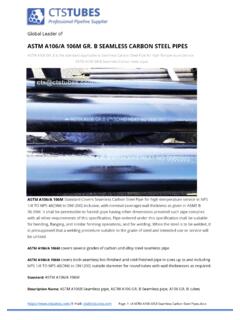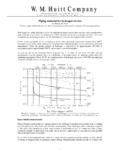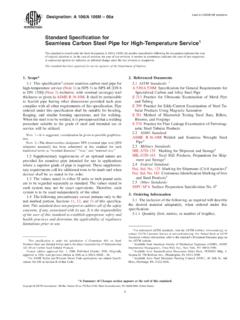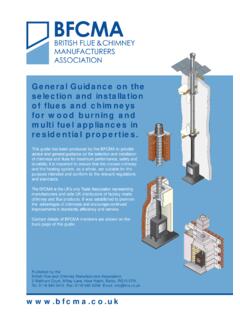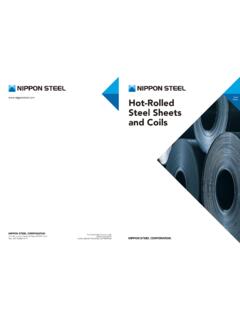Transcription of Training manual Trouble Shooting - Rational AG
1 Training manualTrouble ShootingSCC Line Self Cooking Center - Combi Master- 2 - V03 EN, Trouble ShootingGeneral hints:Isolate the appliance from mains supply before opening the appliance When working with chemicals, aggressive cleaning materialsalways wear protective clothing, goggles and gloves! After maintenance / repair the appliance must be checked for electric safety in accordance with your national, state and local requirements! Whenever working on any gas component like:Gas valve, gas blower and / or changing connected type of gas a detailed flue gas analysis MUST be done using adequate CO and CO2 measuring equipment! This shall ONLY be done by trained technicians!Always check appliance for possible gas leakages!- 3 -V03 EN, Trouble ShootingTrouble Shooting Fault tree Miscellaneous Main Fan Motor SCC Line 4 Humidity Control SCC / CM 6 Clima Valve SCC Line 8 Cleanjet +Care 10 Solid State Relais - SSR 12 SCC - Main Printed Circuit Board (PCB) 14 SCC - Software 16 Bus Control 18 Gas 20 Selftest 22 Service 10 (SC Pump) 23 Service 11 (CDS Sensor) 24 Service 25 (Cleanjet Pump) 25 Service 26 (Drain Valve) 26 Service 27 (Drain Valve) 26 Service 32 (only gas unit) 27 Service 34 (Bus) 27 Service 40 (Care Pump) 28 Service 41 (Y3 Moistening solenoid) 29 Service 42 (Y4 Care solenoid) 30 Service 43 (triple solenoid valve) 31 Service 44 (Steam Heating) 31 Service 100 (Main Contactor) 32 Service 110 (SC-Pump) 32 Service 120 (Y1 Filling solenoid, Level electrode)
2 33No display - safety circuit - SCC 34No or too low steam production - SCC 35 Service 12 / Indication descaling - SCC 36 Buzzer sounds - SCC 37 RESET indication (Gas units) - SCC 38 Check polarity (Gas units) - SCC 38 Indication E13 (SC-Automatic) - CM 39No function- safety circuit - CM 40No Steam - CM 41 Indication rES (=reset) - CM 42 CHnG POL (check polarity) - CM 42 Buzzer sounds - CM 43 Circuit diagram Power Circuit 45 SCC Service Reference 50CM Service Reference 52- 4 - V03 EN, Trouble ShootingFan Motor SCC LineFan Motor SCC Line 1 NAC 100-240V (L1, N, PE) 3AC 400-480V (L1, L2, L3, PE)1. Standard operation The green LED shows when power is supplied from the secondary side main running signal is coming via BUS connection from the main PCB (CM) or I/O PCB (SCC).
3 This signal also determines the speed of the motor speed differs depending on the unit size the motor is build in (examples):CM: 1800 (450) rpm (all sizes)SCC 61: 500 1900 rpm SCC 202: 500 2200rpThe BUS cable (RJ45 connection) can be connected to either the left or right RJ45 motor is shipped with the motor shaft gasket ( ), an optional jumper ( ) and a venting pipe con-version kit floor models 201 and 202 two motors of the same kind are used. In this case the upper motor must get the jumper onto the right two pins as Mounting sequence: When mounting a new motor please observe the following mounting sequence:When fitting a new motor ALWAYS use a new motor shaft gasket (which is supplied with the motor)! Fix the motor bolts first hand-tight only, followed by the new gasket in its mounting ring very loose, now tighten the motor bolts: This allows the gasket in its bracket to center itself before you tighten the 4x flat 10mm nuts of the gasket mounting sure the off-centered hole in the holding frame is mounted in 12 o clock position.
4 Only with this sequence you assure that the motor shaft gasket is mounted centered. The fan wheel screw must be tightened with torque 38 : After mounting the motor and fan wheel the unit must be newly calibrated for 5 -V03 EN, Trouble Shooting3. Possible fan motor problems Bus connection: CM shows error code E12; cabinet temp. display shows 1 ST: Motor bottom short circuit CM shows error code E12; cabinet temp. display shows 1 CO: Bus problem bottom motor 2 ST and 2 CO refer to the upper motor. SCC shows Service Bus problem bottom motor SCC shows Service Bus problem upper motor If bus connection problem is indicated, change RJ45 connection position first (left right). If Indication chan-ges from 1CO to 2CO or to , change fan motor, otherwise change bus cable ( ) Motor doesn t turn at all: Green LED is not ON.
5 Check secondary side of main contactor. Note: LED is located at bottom left hand corner of motor behind the hose from the Self Clean pump. Power on main contactor ok, LED does not show. Disconnect power plug from Motor and check if power is present at plug. If yes, motor has developed short circuit. Most likely reason: Water caused by condensation dropped onto motor. Check if the venting pipe above the motor is made of stainless steel pipe or silicone hose. If it is silicone hose replace by modification kit (TI 12/2007) supplied with the motor. When mounting the venting pipe make sure to have it centered under the mounting hole in the unit cover to avoid water damage from this position. For bottom motor install collector plate This collector plate is used in all units since 09/2007. For top motor install protection plate (refer to modification instruction MI0907).
6 In case the plug of the power supply cable fan motor is damaged it can be replaced using the repair kits (3 pole plug) or (4pole plug) LED blinking code: The LED might show in a blinking manner. Please refer to below table: Reason Remedy1 Motor doesn t start, no signal from hallsensor Check for motor blockage or change Voltage too low on motor pcb Check supply voltage or change Voltage too high on motor pcb Check supply voltage or change rpm measurement defective Change Motor pcb temperature >105 C Check cooling system (cooling fan, air filter), otherwise change motor6 Supply voltage <80V Check power supply (F1-F2)
7 7 Motor pcb defective Change Motor pcb defective Change 6 - V03 EN, Trouble Shooting1. Humidity control SCC Humidity is permanently controlled inside the cabinet. 3 values are used for this control: - Temperature of the cabinet is measured by thermocouple B4 (located behind motor mounting plate) - Fan motor speed (controlled and measured by Bus cable from Motor to PCB) - Voltage signal from pressure sensor P1 The voltage signal is higher when the fan motor is running at higher speed. There is no humidity control possible when the motor is not turning at all. At any specific given fan motor speed: The voltage signal of P1 is at its highest when the cabinet is cold and dry.
8 The voltage signal of P1 is at its lowest when the cabinet is hot and moist. An average voltage signal for a dry and cold climate (40 C) at standard fan speed (1800rpm) would be between 2,8 and 3,2 Volt. This can be seen in Diagnostic mode 15 as output voltage. In Steam Mode humidity is set to 100% and generated by the steam generator. Humidity can NOT be adjusted in Steam mode. In Combi mode humidity is set default to 90% but can be manually changed between 0% and 100%. Humidity is generated by the steam generator and the food. In Hot Air mode humidity is generated by the cooking food ONLY. This value is set default to 100% and can be limited to any value between 0% and 100% 2. Operational sequence (in general) When the CPU detects that the actual humidity is above the set level, the steam heating elements will be de-energised.
9 The clima valve will open. Dry air is sucked into the cabinet and displaces the moist air through the cabinet drain. After the humidity level falls under the set level the clima valve will close again and steam will be generated if Humidity calibration SCC units with index G (produced since October 2008) will automatically run a self test when they are installed at the customer site. To run this self test the temperature of the unit (sensors B1, B2 and B4 must be below 40 C (104 F). During this self test the humidity values for a cold and dry climate and the humidity values under steam condi-tion will be evaluated in default fan speed ( SCC 101: 1800 rpm). Values for other fan speeds and Combi mode are derived from these and can be identified in Diagnostic 16 by a value which can be divided by 100. Units which are predominantly used for baking must be manually be calibrated at the customer site.)
10 manual calibration is done in service level, Basic settings To start manual calibration the temperature of the unit must be below 40 C (104 F). The cabinet should be clean and dry. The cabinet space should be divided into 3 (floor units: 4) sections. To do so use 20mm closed containers - no grids!- and place them upside down onto rack level 3 and 7 (floor unit: trolley level 3, 10 and 17) Close the door and press start. Humidity Control SCC / CMRPMB4P1- 7 -V03 EN, Trouble Shooting4. Possible humidity control problems General Humidity control problems: - Pipes and hoses from cabinet to Pressure sensor P1 might be blocked with fat or dirt particles. - Water might block the hoses leading to the pressure sensor P1; - Temperature of Quenching sensor B2 must react directly to cold water spray when quenching is active; if temperature remains high check positioning of quenching nozzle to quenching sensor.


